
GEORGE (JURRIAEN)
PROBATSKI
The
Immigrant Ancestor
Part II
The Immigrant Ancestor
Part II

By Nora J. Probasco
Copyright © 2010 Nora J. Probasco All Right Reserved
![]()
Recife, Pernambuco, Brazil
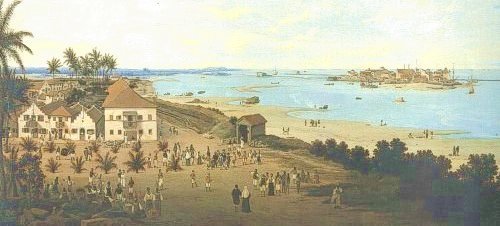
What would bring our ancestor, Jurriaen, to settle in Brazil during the Dutch West-Indische Compagnie (WIC) occupation instead of New Netherland? I believe it was because the Dutch put more effort into settling Brazil than New Netherland because of greater trade advantages. New Netherland was the least popular of the Dutch colonies for settlement, being considered cold and primitive compared to Brazil.
To understand what may have brought Jurriaen to Brazil, a brief history is necessary. The northeast section of Brazil was formally discovered by the Portuguese in 1500 when Pedro Alvares Cabral strayed off course, in his explorations, and discovered Brazil. By 1532, Brazil was divided into captaincies or hereditary fiefdoms and organized occupation began to establish permanent settlements. In the 1530's the first sugar mills were built and Brazil saw its first shipment of African slaves. Recife was a moist and fertile seaboard of the Portuguese captaincy of Pernambuco, Brazil suitable for growing sugar, and was also conveniently located as a port of call for sailing ships traveling from Portugal to West Africa and the Orient. A flourishing triangular trade soon developed, based on the importation of slave labor from West Africa to work on sugar plantations. The sugar was exported to markets in Europe where rising demand was beginning to outrun supplies from traditional sources.
In 1580 Portugal and its empire came under Spanish rule when Philip II of Spain inherited the Portuguese crown. This period of Spanish rule was marked by frequent aggressions against Brazil by the English and Dutch. During such an attack in 1630 by the Dutch, an expedition sponsored by the Dutch WIC captured Pernambuco, which included Recife, beginning the Dutch occupation of northeast Brazil. Dutch settlement of this land would be the next step.

Regarding the settlement of Brazil, we need to realize the different objectives of the East India Company (VOC) and the West India Company (WIC). The main objective of the East India Company was trade and territorial expansion. The principle objective of the West India Company (WIC) was to inflict damage on the colonial resources of Spain and Portugal. To achieve this the WIC used the conquest of colonies and privateering to achieve its aims. Colonization of lands scarcely held a role for the WIC, as privateering and trade offered better opportunities for profit. In this it did achieve some successes such as the occupation of parts of Brazil and the capture of a Spanish fleet carrying a large treasure of silver off Cuba in 1628. The political situation in the Atlantic demanded a belligerent company. The most lucrative areas had already been in the hands of Spain and Portugal since the beginning of the sixteenth century. If the Dutch were to create an empire in the Atlantic, it would have to wage war against them.
As long as the WIC’s activities were limited to privateering and carrying out attacks on Spanish and Portuguese colonies, both private and state interests concurred. However, the establishment of colonies was another matter. The capture of Brazil brought its own set of problems. The Portuguese had been established in Brazil for decades, and when the WIC set about to establish a Dutch governmental, religious and social structure, it had to take into account the existing society, as most of the colonists were Portuguese planters who remained with their sugar plantations.
The Portuguese and the Dutch continued to battle each other for the possession of Brazil. There was a struggle for Pernambuco from 1630 to 1636, with the Dutch gaining control of the coastline. Internal struggles among the Dutch leaders were a problem. There was a lack of a central leader at the seat of government in Recife. In recognition of this, in 1636 the Heeren XIX, the governing body of the WIC, appointed Johan Maurits governor of the Dutch possessions in Brazil.
Upon the arrival of Johan Maurits in Recife in 1637, military problems immediately demanded his attention. A battle erupted at Porto Calvo, approximately 93 miles to the south of Recife. After a Dutch victory, the troops were split into two corps: 2600 men went to the garrisons of Recife and approximately 200 to Fort Prins Willem, Cabo Agostinho, and Port Calvo. At his appointment, Maurits was initially promised 8000 men and a fleet of 32 ships. However, because of the cost the WIC only sent 2700 men and only about 12 ships. This combined with the troops already in Pernambuco, an April 1637 census indicated about 7000 men. Illness and battle casualties would lower this number. Malaria and a form of dysentery were the most prevalent of illnesses decimating both troops and colonists.
In order to have an idea to what extent Brazil was important to the WIC the following is an overview of the ships out to sea for the Company during the period of June 1639 to April 1640, including the soldiers and sailors. [The Utrecht Archive, Archive States of Utrecht (Access 233), inv 231-24, fol. 231-24, fol. 190v-193]:
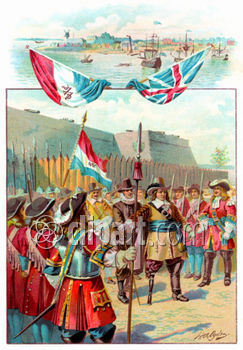
| Departure Port | No. of Ships |
No. of Soldiers |
No. of Sailors |
|---|---|---|---|
| Amsterdam | 41 |
1414 |
1347 |
| Zeeland | 21 |
858 |
738 |
| Maze | 13 |
447 |
526 |
| Noorderkwartier | 7 |
281 |
281 |
| Groningen | 6 |
276 |
207 |
| Total | 88 |
3278 |
3689 |
| Destination Port | No. of Ships |
No. of Soldiers |
No. of Sailors |
|---|---|---|---|
| Brazil | 78 |
3177 |
2790 |
| Guinea and Africa | 6 |
59 |
221 |
| Curacao | 3 |
24 |
62 |
| New Netherlands | 1 |
16 |
16 |
| Total | 88 |
3276 |
3089 |
Most of the settlement in Dutch Brazil was in Recife. When Johan Maurits arrived in 1637, he was deeply impressed by Recife, as witnessed by a letter dated March 28, 1637, in which he says that splendid houses filled Recife’s terrain. However, the Polish Colonel Crestoffle d’Artichau Arciszewski, in service to the Dutch in Brazil, also wrote to the WIC in 1636 describing Recife as a city of two thousand residents with an alarming overpopulation problem. He thought Itamaraca should serve as a better place for expansion. On this he and Maurits would not agree. There was a major housing shortage for those who were newly arrived in Recife, however Maurits felt it had potential.
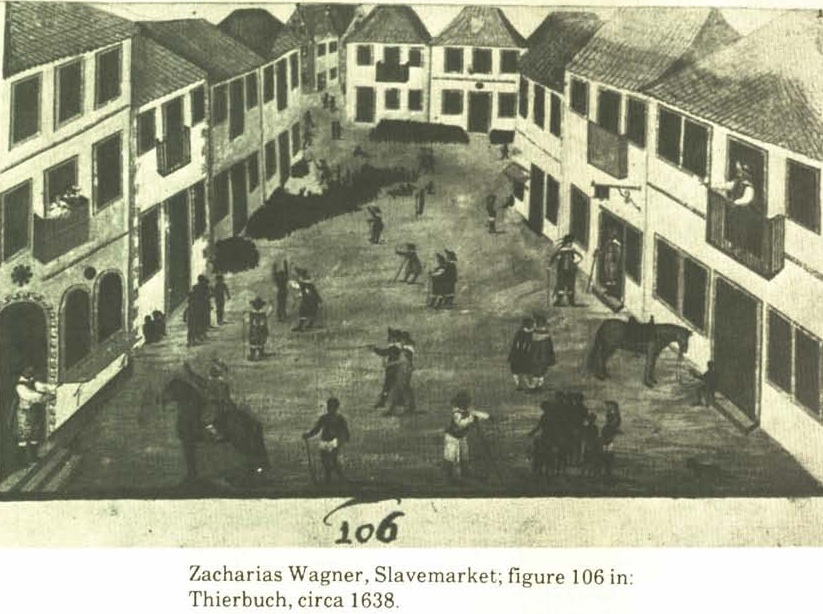
Johan Maurits was very impressed by the mild temperatures and the fertility of the land. In one letter he wrote to the Heeren XIX he suggested they send "here German refugees driven from their fatherland and deprived of their property; they will find a fine country to cultivate and come under mild rule." He set about to tame the city and expand it. He improved and enlarged Recife with new streets, roads and bridges and laid out a new town named Mauritsstad on an adjoining island. In this island city he built a well-stocked aviary as well as zoological and botanical gardens. He built the first astronomical observatory and meteorological station in the New World, as well as a palatial home for himself. He erected a bridge that connected Recife with Maurisstad. He surrounded himself with scholars and artists, and set about capturing as much information as possible about the people, flora and fauna of Brazil as well as having artists capture its landscape images. He ruled the population with considerable ingenuity and insight. He also understood the importance of reconciling the Portuguese population in his realm to Dutch rule, and the importance of religious toleration and free trade. In this endeavor he was mostly successful.
Recife to Maurisstad Bridge

According to C. R. Boxer, in The Dutch in Brazil, 1624-1654, the Dutch subjects in Brazil were divided into two categories: those employed by the WIC called "dienaaren" and the others (such as, settlers, merchants, some artisans, and tavern keepers) called "vrijluiden". Many of these were ex–soldiers who had married and settled down but there were also people who had emigrated from the Netherlands to seek a new life in Nieuw Holland [Recife and surrounding areas]. The "vrijluiden" (free–burghers) and traders were the economic pillar of the colony, and most of the trade was under their control. It should be noted here that many of those who immigrated to Brazil with the WIC were not Dutch. The WIC hired most of its military personnel outside of its own borders, and it has been suggested that around seventy percent of the Dutch military was not Dutch in origin.
Initially it was thought that Jurriaen went to Brazil as a sailor or soldier. Sometimes people emigrated to Brazil as sailors or soldiers and after their contract expired, remained there to practice their old trades. I was fortunate to be able to obtain a 1655 Court-ordered Dutch list of the thousands of WIC soldiers who had served during the Dutch reign in Brazil, researched it thoroughly and did not find George/Jurriaen listed. So it is safe to say he was not a soldier or sailor while in Brazil.
Recently I found a document from the WIC records at the Naational Archief at Den Haag dated July 30, 1643 in which “George Probatchi”, blacksmith, was interviewed in Recife by the master blacksmith in the employ of the WIC regarding work he was performing. [Copy of 1643 document] Therefore, we know Jurriaen was in Recife by 1643. It is my belief that depending on when he was actually born and when he finished his apprenticeship to become a blacksmith, he probably left Breslau shortly thereafter. This could possibly put him in Brazil sometime between 1638 and 1642. Skilled workmen, such as smiths, masons, builders and cobblers could earn a good living at Recife. In 1639 a master carpenter could earn six florins a day.
There were five smiths employed by the WIC in Recife, and only one was Dutch. One was a master blacksmith, probably the Dutchman, whom the other blacksmiths worked for. In an inventory, taken by the Portuguese, of the houses and buildings in Recife and Mauritsstad, built or restored by the Hollanders up to 1654, we find the following locations where the smiths were located:
In Recife: |
units |
|
|---|---|---|
| no. low houses (casa terreiras) | ||
| 111 | old, damaged, Herenstraat, smithy | 1 |
| 112 | " " " | 1 |
| 186 | smithy + residence | 2 |
| 210 | behind smithy 111/112 | 1 |
| no. multi-story residences (casas sobradas) | ||
| 211 | very old bldg. for smith | 1 |
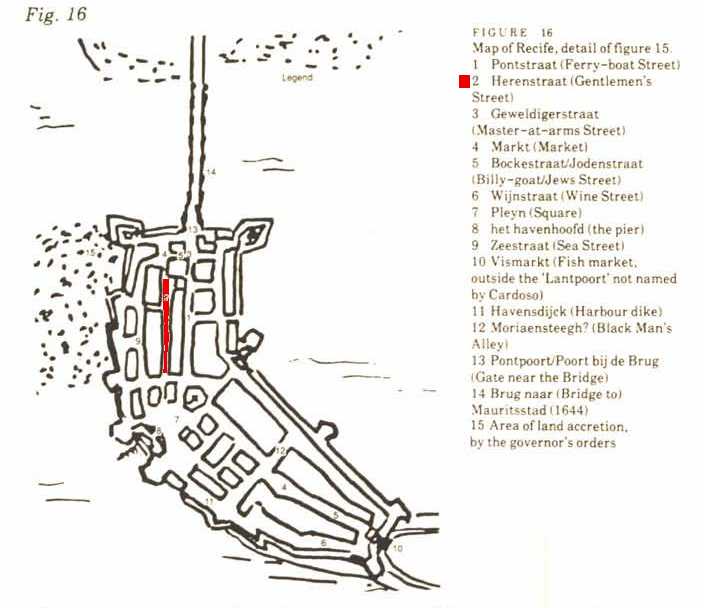
Herenstraat, listed above, was one of two of the oldest streets in Recife. Other artisans or tradesmen in Recife in addition to the smiths were two tailors, a tanner, a shipwright, a cobbler, a jailor, a notary, and three surgeons. Though soldiers and sailors signed with the WIC for three years, artisans or tradesmen signed for five years. Unfortunately, WIC employees were not always paid as promised and when paid, deductions were taken for supplies and lodging furnished to them, which had not been agreed to in their contract with the WIC. There was plenty of resentment from the employees for the unkept promises made to them when the WIC first recruited them. Was this Jurriaen's fate while under contract to the WIC? Depending on when he arrived in Recife, he would have been under contract for five years. At the very latest, his contact would have expired by 1648 if we go by the year 1643 when we can first document him in Brazil. Yet he remained in Recife. Apparently he was doing well enough to want to remain there.
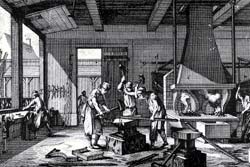
Jurriaen's work as a blacksmith was not easy. He spent many hours in high heat and grimy conditions working on shaping various metals. The fire would have to be stoked and fed to maintain the proper temperatures to shape the metals. The work would be physically demanding and he would require considerable strength to lift and work the metals of larger projects while keeping a continuous pace going. It would require good concentration as much of the work was repetitive. And it would be very noisy when working the metal on the anvil to shape it. We know from the 1643 WIC interview document for Jurriaen that he had been working on the undercarriages for cannons. We can also observe from the above list of buildings where the smiths were located, they were usually in very old and damaged buildings. Jurriaen must have been in excellent physical shape to continue this grueling process day after day, year after year.
In further research of the 1655 Court-ordered Dutch list of the thousands of WIC soldiers who had served during the Dutch reign in Brazil, Jurriaen was not alone in Recife as there were at least seven soldiers from Breslau and thirteen from Silezi who also served in Recife. So he would have had compatriots from his own city or surrounding area. In a scan of the locations of the various soldiers, it became obvious that the majority of the soldiers listed came from Germany or German dominated areas.
The Dutch control of Brazil was always tenuous, and the WIC failed in its aim of colonization. The majority of the colonists were Portuguese "moradores" or citizens with a different religion and language that were always ready to revolt against the Dutch "heretics". In October 1642 the province of Maranhão revolted and after one year of fighting the Dutch troops retreated.
In April 1642 the directors of the WIC, Heren XIX in Amsterdam, wrote to Johan Maurits informing him to return to Holland in the spring of 1643. However, he postponed his departure until May 1644. In 1643 and 1644 the Heren XIX forced Johan Maurits to decrease manpower for all garrisons of Dutch Brazil from 4,000 to 2,000 men before his departure. The loss of Maurits as governor did not bode well for Dutch Brazil, and ended a period of relative growth and stability.
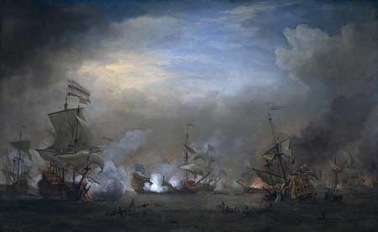
Deprived of his wise leadership, the WIC lost control over the colony. After his departure, the Portuguese planters revolted against Dutch rule, and after the battle of Tabocas (3 August 1645) ended with a Dutch defeat, the Dutch were forced on the defensive. In many areas the Portuguese won back territory, and at the end of the year 1645 the Dutch possessed only Recife and, in its vicinity the Forts of Cabedello (Paraibá) and Ceulen (Rio Grande do Norte), and the islands of Itamaracá and Fernando de Noronha. The Dutch garrison itself was demoralized, and in addition there was a shortage of food and supplies to sustain the population.
Between September 1645 and January 1646, Recife had a total population of 1,704 'free people', subdivided into 855 men, 452 women, and 397 children. Mauritsstad at the same time had 685 inhabitants made up of unspecified Dutchmen, Jews, Portuguese, and other whites. This number did not include the officials in service to the WIC who totaled approximately 500 for both places, including their families. Neither are soldiers or Negro slaves included: the total number of this last category was tallied in October 1645 at 1,962.
The first records we find for Heyltien Aertss are in the Dutch Reformed church baptismal records in Recife, Pernambuco, Brazil listed in the “Doopregister de Hollanders in Brazillie, 1633 to 1654,” where she witnessed the following baptisms in 1645:
Doopregister de Hollanders in Brazillie, 1633 to 1654, page 19
[record 359] 1645 Feb 19. Clara. Ouders: Gratiaen Daniels en Catharina Luserel; get.: Martijn Carel, Jacob Valloo, Heyltien Aertsen, Clara Langh.Doopregister der Hollanders in Brazillie 1633-1654, p. 20
[record 389] 1645 Juny 18. Lijsbeth. Ouders: Jan Glande en Lijsbeth Janns; get.: Francoys Marselier, Daniel Janss, Hildeken Aertss, Catharina Lyseret...
What is interesting about the two baptisms above is that Catharina Luserel or Lyseret was listed in both along with Heyltien Aertss. Who was she? Were they related or friends? Most who immigrated to Dutch Brazil, in all likelihood, left family behind and had to depend on the relationships they made with other immigrants to stand as witnesses to baptisms. Also of interest, in the second baptism, Lijsbeth Janns would later immigrate to New Netherland.
I do not know if Jurriaen married Heytien in the Netherlands or in Brazil. In a discussion with several researchers, arguments could be made either way. One cited C. R. Boxer’s “The Dutch Seaborne Empire, 1600-1800” which said there “was a lack of respectable Dutch women” in the colony and felt strongly he married Heyltien in The Netherlands. I felt the same way until I found the WIC document showing Jurriaen was in Brazil in 1643. From this it looks like he may have met and married Heyltien in Brazil, especially since we find a record of her in Brazil in early 1645 and they did not have children until 1647. Sadly, there are no marriage records that remain for Recife during this time. Also, though much has been written about the war in Dutch Brazil, little has been written about the people themselves, their activities or social lives.
Most current works represent the years of Dutch Brazil as the Portuguese against the Dutch, yet most who lived and/or served in Dutch Brazil were not even Dutch. It has been written that there was religious toleration in Dutch Brazil but only for certain religions. For example, there were a large number of Lutheran soldiers and sailors in the WIC's service in Brazil, yet the Lutheran religion was not tolerated nor were there any Protestant churches with which to worship except the Dutch Reformed church. The Dutch Reformed church tried to set itself up as the public church in its Brazil colony to minister to the combined Protestant population. They even brought in ministers that could preach in different languages to reach the various nationalities there. What were these immigrants' daily lives like, and given the mixture of international cultures and religions what was there to bring them together in any meaningful way? We are left with more questions than answers...
I have to believe that the Dutch Reformed church filled a void for these different international settlers. The church was being used by the Dutch much like a missionary service. They would employ ministers who could speak many of the languages of the various settlers, including Portuguese, to try and convert them to Calvinism as well as indoctrinate them into Dutch life. The church also furnished the schooling for the children of the soldiers, sailors and settlers with families. They were also responsible for the orphanages and raising funds for children of slain soldiers and sailors. One important duty was provided by the "ziekentroosters" or comforters of the sick. They would visit those who were ill and in need of comfort both in families and the military. One of their duties was to read religious works to those in need of comfort. In what other ways may the church have touched the lives of its settlers? We know that Heyltien was involved in the church as early as 1645.
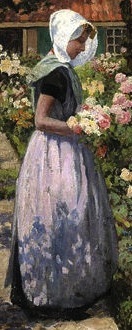
Who was Heyltien Aertss? If Jurriaen met her in Recife, she may have been the daughter of either an official, soldier, sailor, tradesman or merchant. It is doubtful she would have immigrated by herself. Because she would later baptize her children in the Dutch Reformed Church in Recife I believe she was probably Dutch, especially since her name was always listed with a patronymic (Aertss, Aertsen) and not a last name or surname. The church may have been a common ground for Heyltien and Jurriaen. With the church positioning itself as the public church for all Protestants in Dutch Brazil, could they have met in the church? One of its mission was to minister and educate the Protestant population of the colony, guiding non-Reformed Protestant sailors, soldiers and civilians towards an understanding of Calvinist theology, church discipline and schooling. It is my belief that Jurriaen was Lutheran and fell into the audience the Dutch Reformed church sought. Other than the baptisms of his children, I have found no other references to him in the Dutch Reformed church records. I may have found possible family members of Heyltien in the following baptisms:
Doopregister der Hollanders in Brazillie 1633-1654, p. 5
[record 82] 1639 Juny 1. Marretien. Ouders: Jan Theunissen en Marrctien Aertss; get.: Pieter Pieterss, Margreta van dr. Hoff, Annetien Janss.Doopregister der Hollanders in Brazillie 1633-1654, p. 9
[record 136] 1641 Aug 11. Florentius. Ouders: Herry Nots en Lijsbeth Wouters; get. Pieter van dr. Meulen, Gilliaem Aertss, Anneken van der Veer, Catharina BarentsDoopregister der Hollanders in Brazillie 1633-1654, p. 27
[record 573] 1648 Aug. 2. Hans Jurriaen. Ouders: Hans Jacobs en Magdalena Vrijmulder; get.: Willem Aertsen, Christiaen Andries, Sophia Broeckmans.Doopregister der Hollanders in Brazillie 1633-1654, p. 30
[record 696] 1650 Juny 6. Bastiana (in onecht geboren). Ouders: Johan Langh en Catharina, negerinne; get.: Matthijs Aerts v. Cuelen*, Bastiana Perera.[*Note that his name was followed by Van Ceulen. There was a Fort Ceulen in the vicinity of Recife which the Dutch held from 1633 to 1654 in which he was instrumental in capturing.]
I did not list all of those with the Aerts, Aertss and Aertsen patronymic. In all I found eight individuals with the patronymic. I did not list those who were baptizing a child as I felt that if they were related, Heyltien would have been a witness. I did list some that were witnesses to baptisms. I only found one occurence with a first name of Aert but he would have been too young to be Heyltien's father.
According to the book, "Reformed Church in Dutch Brazil (1630-1654)," there was a comforter of the sick or teacher named Cornelis Aertsz from 1642 to 1644. What seems to be missing, though, is that there were no witnesses with this patronymic listed in the baptism of Jurriaen and Heyltien's children. If she had family there, wouldn't they also be witnesses in these baptisms?
Another possibility exists. Heyltien may have been married before and accompanied her husband to Dutch Brazil. He may have died shortly after their arrival. Could this be her tie to Catharina Luserel or Lyseret? She appears as a witness to the baptism of one of Catharina's children in 1645, and they appear together as witnesses in another baptism a few months later. Then Catharina does not appear again in the records. Could this be her sister-in-law? We may never know the answer to this. If Heyltien was married before, she now found herself alone in this new world.
What were Heyltien's thoughts when she found herself in such a different land and society from whence she came, coming from a more homogenous European society to one where there were only a few Dutch, many different Europeans speaking various languages, a large scale population of African black slaves, a hostile population of Portuguese-speaking natives as well as the native Indian tribes from Brazil. All of this would be so foreign to her and the adjustment must have been immense for a young Dutch woman. Yet she stayed, met a young European from Breslau and remained in this environment to have children under some very challenging circumstances.

What attracted them to each other? There were twice as many men as women in Dutch Brazil, with many of those women being married. Just finding a mate was a major challenge and endeavor for the young men. Many just used the brothels to take care of their needs and did not find mates. Others mingled with and married Portuguese women who inhabited the area. This can be seen in the Dutch Reformed Church records to some degree and probably would show up much more in the Catholic records there. Yet somehow, Jurriaen and Heyltien both found a European mate. What was it about Jurriaen that attracted Heyltien? Did she see the man behind the tough facade of a local blacksmith? What would they have had in common to cause this attraction? Did they have friends in common? One can only speculate as there is not much written on the social aspects of Dutch Brazil.
At any rate, we know that Jurriaen and Heyltien Aertss somehow met and married by 1646 because on March 24, 1647 Jurriaen and Heyltien baptized their first child, Margerit:
Doopregister der Hollanders in Brazillie 1633-1654, p. 23
[record 468] 1647 Meert 24. Margriet. Ouders: Jurriaen Probatski en Heyltien Aertss: get.: Abraham van Stricht**, Susanna Sweerts. [Actual Record in Kerkelijke Registers, 1633-1653, LDS FHL film# 113070, item 4][**Abraham van Stricht was later appointed Commissioner of the Artillery around 1649-50 in Brazil. Susanna Sweerts appeared in several other baptisms.]
Battle of Guarapes

Life in the ensuing years became more complicated as the Dutch battles with the Portuguese increased, and the Dutch began losing more territory. Major battles at Guararapes during 1648 and 1649 sustained heavy losses, and prompted many families to return to Holland or the West Indies. Sadly, five of the soldiers from Silezi which Jurriaen may have known were killed in the Battle of Guarapes in 1649. The Dutch lost as many as 957 in this battle. Meanwhile, Jurriaen and Heyltien remained in Recife and had their second child, Christoffel:
I did not use the Doopregister der Hollanders in Brazillie 1633-1654 for Christoffel because Walsh inadvertently captured the wrong date (June 6). The source I used for this was the baptism records in the Nederlands Hervormde Kerk for Parnambuco, Brasil [sic]:
1649 Juny 13. Christoffel. Ouders: Jurriaen Probatski en Hilletien Aertss; get.: Jan Reynierss***, Rijckie Janns. [Actual Record in Kerkelijke Registers, 1633-1653, LDS FHL film# 113070, item 4][***Jan Reynierrs appeared as a witness in another baptism for Hans Asmus and Marrittien Janss on July 6, 1642.]
I have often wondered if Jurriaen named his first born son Christoffel after the Polish Colonel Crestoffle d’Artichau Arciszewski who fought in service for the Dutch in Brazil, or maybe that his own father may have been named Christoph or Krzysztof. Sadly, until more information is found we can only conjecture.
In 1650, Recife was being beseiged by the Portuguese. Neither side was strong enough by now to give the "knock-out blow" to the other. The Portuguese remained strong inland, while the Dutch held Recife and control of the sea. Each side was having trouble garnering continued support from their home countries. During the seige there was a shortage of fresh fruits and vegetables thereby causing increased health problems among those already stressed out by war. Amid this turmoil Jurriaen and Heyltien had their third child:
Doopregister der Hollanders in Brazillie 1633-1654, p. 35
[record 747] 1651 Mayo 17. Anneken. Ouders: Jurriaen Probatssey en Hilleken Aerts; get. Jan Reynertsen Spits, Dirck Pieterssen Bijl, Geertien Adriaenssen, Margarita Paccen. [Actual Record in Kerkelijke Registers, 1633-1653, LDS FHL film# 113070, item 4]
From the perspective of Pierre Moreau, a native of Charolais in Burgundy, France, who had spent time in Pernambuco among the Dutch, in 1651 wrote:
"It does not seem likely that the Dutch can ever recover and regain what they had in Brazil... This is because the land they hold, from Ceará to the city of Olinda, has been wasted and depopulated. The houses, settlements, villages, or towns, as well as the fruit-bearing regions, have been burnt to the ground, making them totally worthless. And even though they might hold onto the fortresses at Rio Grande and Paraiba, which besides Recife are the only ones still resisting, these forts are not good for much and cannot come to anyone's aid. Those Dutch who set out to build some shacks and till the soil or those who wander any distance [away from the forts] are ambushed and killed by the knavish Portuguese corsairs, by the Tapuias, or by the untamed natives who pity no one. The Portuguese have blocked off Recife on all sides by land..."
Jurriaen and Heyltien must have been of strong stock to remain so many years under such conditions, finding and marrying each other, as well as having a family. Jurriaen must have developed a profitable enough business to want to remain. One can only imagine the ties that bind someone to an area, such as friends, possibly family and continuity of a way of life. There still must have been hope among the colonists that, somehow, the Dutch would be able to continue the colony and pull through this bleak situation.
However, this was not to be. The Dutch colony in Brazil came to an end in January 1654, when the Dutch ceded this area back to the Portuguese, after losing many battles. From various Portuguese documents, it is estimated the population of Recife and Mauritsstad, in 1654, was approximately 4,000 people excluding slaves. The Portuguese made little concession to the Dutch and only a few Dutch remained. Most left on WIC ships to return to The Netherlands. It is highly probable that Jurriaen, along with the other colonists, may have lost everything when they left Brazil or could only take what they could carry. This conclusion seems to be supported by the following report by Portuguese General Francisco Brito Freyre on January 29, 1654. This report describes the misery of the defeated and what they were leaving behind:
"They took ship, the women, children, and Negroes, almost all of the soldiers, and a couple of Jews, carrying whatever they could, while they investigated what remained in Recife. It was a sad spectacle to see, people carrying their possessions with them, while others set fire to what they were leaving behind, amidst those who bewailed their departure and lamented that they were seeing all this for the last time and had many dead to mourn…"
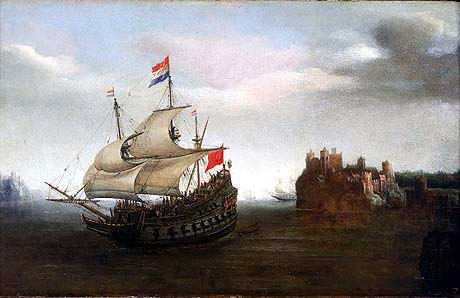
We can only imagine the sadness that Jurriaen and Heyltien must have felt as their ship departed leaving behind the place they called home for so many years, and the hopelessness of having to leave most if not all of what they owned and worked for behind only to start over anew...
There will be a continuation in Part III
Bibliography
A Concise History of Brazil by Boris Fausto, Cambridge University Press, NY, 1999, pp. 34-35
Algemeen Rijksarchief: Eerste Afdeling, Archief Staten-Generaal, toegang 1.01.07, inv.nr., 12582.7, rekening van het krijgsvolk in Brazilië 1655: bevat -per Kamer geordende- lijsten met in totaal duizenden namen van het krijgsvolk dat gediend heeft in Brazilië; bevat ook lijsten van doden, vermisten en gevangenen [12582.7 Inventory of the soldiers in Brazil 1655: containing Court-ordered lists with a total of thousands of names of the soldiers who served in Brazil; also containing lists of dead, missing and prisoners]
Brazilie in de Nederlandse Archieven (1624-1654), CNWS Publications, Leiden University, 2008, p. 418
Challenging Cultural Dichotomies in Dutch Brazil, by Lucia Werneck Xavier, M.A., Leiden University, The Netherlands (presentation of ongoing research)
Chapters of Brazil's Colonial History, 1500-1800, by Joao Capistrano de Abreu, Oxford University Press, UK, 1997, pp. 23-29, 35-42 & 69-90
Dutch Brazil: History of the Dutch in Recife... http://www.colonialvoyage.com/brazil.html
Go-betweens and the Colonization of Brazil, 1500-1600, by Alida C. Metcalf, University of Texas Press, TX, 2005, pp. 173-175
"Histoires de derniers troubles du Bresil entre les Hollandois et les Portugais," by Pierre Moreau, Paris, 1651
Kerkelijke Registers, 1633-1653, LDS FHL film# 113070, item 4
A Experiencia Colonial Neerlandesa No Brazil (1630-1654), by Lucia Werneck Xavier, M.A. in Annals of the II International Meeting of Colonial History-A Journal of Humanities. UFRN. Caico (RN), v. 9 No. 24, Sep/Oct 2008
New Netherland: A Dutch Colony in Seventeenth-Century America, by Jaap Jacobs Ph.D., Leiden University, The Netherlands, 1999, p. 2-3 & 38-39
Recife: The Rise Of A 17th-Century Trade City From A Cultural-Historical Perspective, by Hannedea Van Nederveen Meerkerk, Van Gorcum, The Netherlands, 1989, pp. 95-96, 156, 162-163 & 167
The Dutch in Brazil, 1624-1654, by C. R. Boxer, Oxford at the Clarendon Press, UK, 1957, pp. 71-75, 112-150, 212-216, 230-231
The Dutch Reformed Church in the American Colonies, by Gerald F. De Jong, W. B. Eerdmans Publishing Co., MI, 1978, pp. 11-16
The Expansion of Tolerance: Religion in Dutch Brazil (1624-1654), by Johnathan I. Israel, Stuart B. Schwarz & Michiel van Groesen, Amsterdam University Press, Amsterdam, pp. 21-24
The Reformed Church in Brazil (1630-1654), by Dr. Frans L. Schalkwijk, Uitgeverij Boekencentrum, Zoetermeer, pp. 123 & 306
Back to Contents / Jurriaen Probasco Contents / Back to Home Page